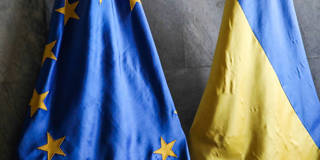No resolution to the Russia-Ukraine crisis will endure unless the EU plays a central role in crafting it. As the EU's High Representative for Foreign Affairs and Security Policy, Josep Borrell, has pointed out, the Union “cannot be a neutral spectator" in talks concerning issues that directly affect European security.
MADRID – Europe has a security framework like no other, embodied in an intricate web of treaties, rules, and institutions. Despite its sophistication, the European security order is not a finished product, but one that is constantly under revision.
Europe’s security arrangements have been built up gradually, over the course of several decades. The foundations were laid at the 1945 Yalta Conference, where US President Franklin D. Roosevelt, British Prime Minister Winston Churchill, and Soviet leader Joseph Stalin reorganized Europe by dividing the region into spheres of influence, placing Europe’s security posture on a more stable and predictable footing.
Three decades later, in 1975, the Helsinki Summit of the Conference on Security and Cooperation in Europe helped to ease Cold War tensions. In the 1990s, the Conference was institutionalized as the Organization for Security and Co-operation in Europe (OSCE).

MADRID – Europe has a security framework like no other, embodied in an intricate web of treaties, rules, and institutions. Despite its sophistication, the European security order is not a finished product, but one that is constantly under revision.
Europe’s security arrangements have been built up gradually, over the course of several decades. The foundations were laid at the 1945 Yalta Conference, where US President Franklin D. Roosevelt, British Prime Minister Winston Churchill, and Soviet leader Joseph Stalin reorganized Europe by dividing the region into spheres of influence, placing Europe’s security posture on a more stable and predictable footing.
Three decades later, in 1975, the Helsinki Summit of the Conference on Security and Cooperation in Europe helped to ease Cold War tensions. In the 1990s, the Conference was institutionalized as the Organization for Security and Co-operation in Europe (OSCE).